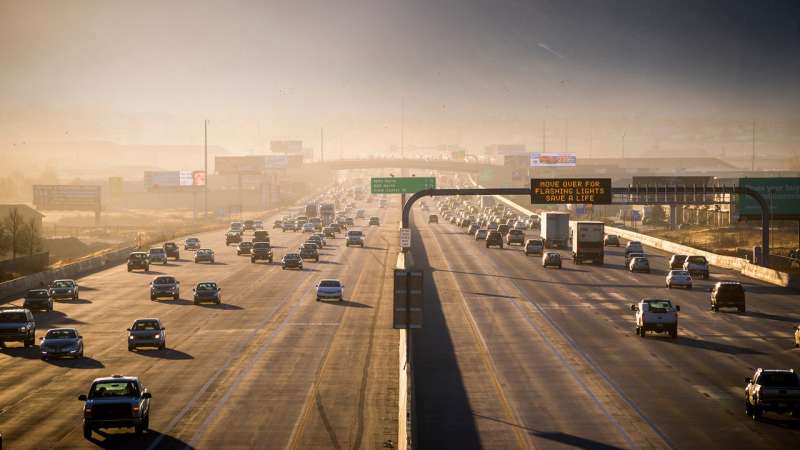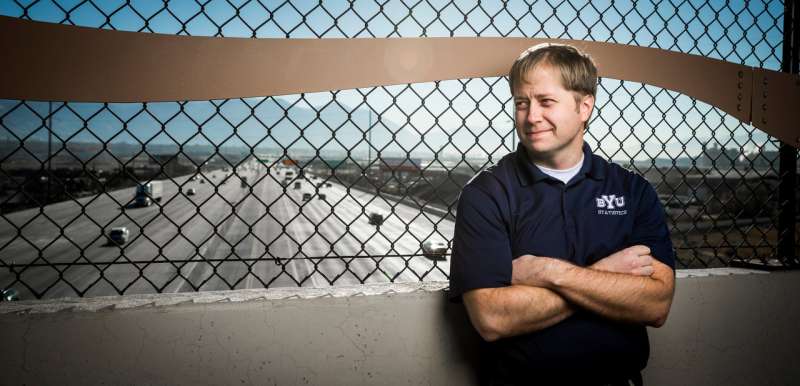Want safe travels? Find freeways with these features

New BYU research commissioned by the Federal Highway Administration (FHWA) shows a number of highway features that make accidents less likely. Among them are some that are intuitive: minimal hills and curves, paved right shoulders and concrete-barrier medians. But one finding was less expected: lower speed limits were associated with higher rates of accidents.
"I think the speed limit was the shocker," said statistics professor Matt Heaton, who coauthored the study, recently published in Statistical Modelling. "We found that the lower speed limits, the 60 to 65 zones, were the higher-risk areas."
The FHWA seemed unsurprised by the finding, Heaton said, noting that lower speed limits were usually in high-traffic areas, which would increase the risk of crashes. But even controlled for traffic, the correlation held. Contrary to speculation about the dangers of high-speed-zone freeway sections, the finding shows "that we should really take a look at this a bit deeper and realize maybe higher speed limits aren't as big of a risk as we once thought," Heaton added.
For this project, Heaton, joined by fellow professor Shannon Neely Tass and then-master's student Kaitlin Gibson, combined two separate statistical analyses to explore potential factors crashes on five interstate Washington highways. One method examined roadway features correlated with incidences of crashes, and another looked specifically at high-crash areas (known as hotspots), controlled for the factors in the other analysis. "We wanted to merge them together to get the best of both worlds to understand why crashes happen and how to prevent them," said Heaton.
On the roadway features side, said Gibson, "our results suggest that increasing the shoulder width, decreasing road curvature, and including a non-soil median (i.e., a concrete barrier) are associated with a decrease in overall crash risk."

Heaton points to Utah's I-15 as an example of a well-constructed, lower-crash-risk freeway: there aren't high curvatures, the medians are well separated and there's a wide left shoulder outside of the HOV lane. On the flip side, he points to Colorado's I-70, with its grass shoulders, rolling terrain and high curves going into mountainous areas, as a more risky freeway.
In exploring Washington's hotspots that remained even after controlling for such variables, the BYU team found segments that likely had high levels of driver distraction. One such hotspot, on Washington's I-5, has a clear view of Seattle's Space Needle. Another was near a ski resort, which had, said Heaton, "lots of things to look at besides the road."
Heaton and Gibson both emphasized that hotspot finding shows that driver distraction comes from more than just cell-phone use. Unfortunately, said Heaton, "you can't just obstruct the view of what's around you or control what's off the freeway." But, he added, engineers can "do other things to decrease the risk in these areas. You can control how the freeway is constructed to try to bring the risk down."
David Banks, a Duke University statistics professor, called Heaton "one of the leaders" in his field of study (spatial process modelling), and noted that his combined-analysis methodology is "more powerful than either of them separately."
With information from their Washington study, Gibson is hopeful that other highway administrations could implement similar models using their own local data. "They could make changes to roadway construction for increased safety, as well as study the identified hotspots further to try to discover, and potentially fix, the other factors associated with the high risk," she said.
More information: Kaitlin E. Gibson et al, Identifying crash risk factors and high risk locations on an interstate network, Statistical Modelling: An International Journal (2017). DOI: 10.1177/1471082X17722072
Provided by Brigham Young University


















